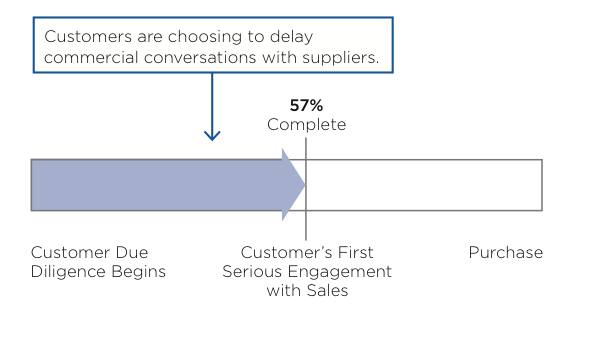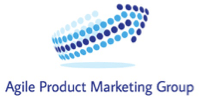The importance of understanding the buyer’s journey:
One-way vendor controlled sales methods are dead – The buyer is now firmly in control – which is why inbound marketing is well suited to support today's buyer’s journey
The concept of the Buyer’s Journey is essentially a framework that describes the cognitive steps each buyer must personally traverse leading from apathy (Do I care?) to commitment (How can I buy this?) This concept applies almost universally whether you’re buying a dishwasher, a car or a salesforce automation platform. The framework is based on the buyer getting the proper information at each step to advance to the next step.

The Buyer’s Journey can be divided into 3 major stages:
As buyer’s progress along this journey they will determine how severe their problem is, their alternatives for solving their problem, the costs of solving their problem and ultimately whether they will solve that problem by purchasing from you, your competition or doing nothing i.e not making any purchase.
- Awareness Stage : The buyer becomes aware of a business problem and takes steps to determine the cause,
- Consideration Stage : The buyer understands the cause of the problem and is researching possible solutions.
- Decision Stage : The buyer has identified the best solution and is ready to implement it to solve the problem.
And why the buyer's journey needs to drive your sales and marketing engagement approach

In 2012, a CEB (Consumer Executive Board) study of over 1,400 B2B customers revealed that 57% of a typical purchase decision is made before a customer even talks to a supplier. Opinions vary on how far the needle has moved; some insist that buyers are progressing as much as 90% through the buyer’s journey before engaging with vendors, while others believe the timing of vendor involvement fluctuates based on product complexity. This implies that the tipping point for initiating direct vendor contact is different for every business.
Inbound marketing has emerged as a proven method to support a buyer driven sales and marketing approach
The vendor’s role has changed from that of dictator to guide and adviser providing relevant information a buyer needs to aid in their decision-making. Buyer’s now have the expectation that they will be able to find information to meet their needs at each stage of the buying cycle. If you don’t have the right information then the journey can come to a screeching halt. You need to not only provide information buyers need, but get it to them at the right time in the right context.
You need to be an expert on the buyers environment – not your own. You need to be an expert in their business, their challenges and what it takes for them to be successful. Speak to them in their language and you will then be able to describe exactly where your “solution” will resonate with them and how it brings them value.
Your information content needs to be mapped to the buying cycle and you need to be able to identify the signs that your prospects are ready to move to the next stage. Inbound marketing provides the tools and the techniques to deliver this content so that your organization will more closely resemble a Sherpa or adviser who understands the buyer’s environment and can guide them through the buying process – rather than a dictator trying to control the process.
Why inbound marketing works with B2B technology buyers
Buyer’s of enterprise technology products for their business have a lot riding on their decisions and as a result often require significant amounts of information. Due to the complexity of the technologies and the fact that that there are often interdependencies between the technologies and multiple people or departments involved in the use and purchase decisions, buyers require massive amounts of information to make decisions. Inbound marketing is an approach well suited to put the buyer in control and meet their informational needs on their terms and time lines. Inbound leverages multiple channels and vehicles, including video, white papers, blogs, social, email search engine marketing and more- with the key being the buyer is in control of the process. When you combine the right content with marketing automation and analytics you can deliver buyers the information they need when they need it and fine-tune your responses over time based on actionable data.
How are you guiding the buyer’s journey- do both your sales and marketing teams understand this process and work to support it? For more information get the guide:


